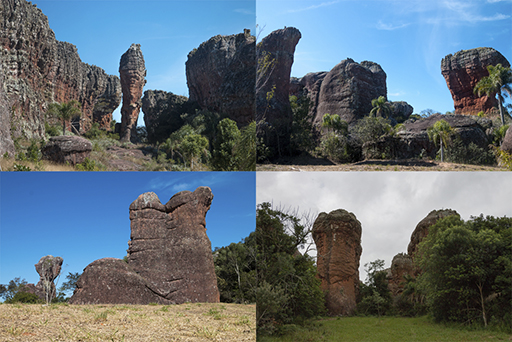roup of natural sculptures caused by rain erosion of Itararé Group sandstone, called ArenitoVila Velha (Old Sandstone Town). These sandstone formations go back 300 million years in the Carboniferous Period, which corresponds to one of Earth’s great, past eras, the Permo-Carboniferous glaciation on Gondwana. The processes of erosion that sculpted Arenito Vila Velha (mostly falling rain), took place during the Quaternary Period, within the last 1.8 million years.
The notable characteristic of Vila Velha sandstone is the presence of ruiniform relief in a rich association of forms, such as fluting, cones, towers and spires. The reddish tonality derives from the iron oxide and manganese in the cementation of the sandstone. The natural sculptures are impressive formations reaching up to 30 meters in height. Their unique shapes have led to their names: Taça (goblet), Camelo (camel), Bota (boot), Tartaruga (tortoise), Índio (Indian), Garrafa (bottle). Seen from afar, the formations look like old city walls, hence the place name.
The 9,400-acre Vila Velha State Park was created in 1953, in the Ponta Grossa municipality.
